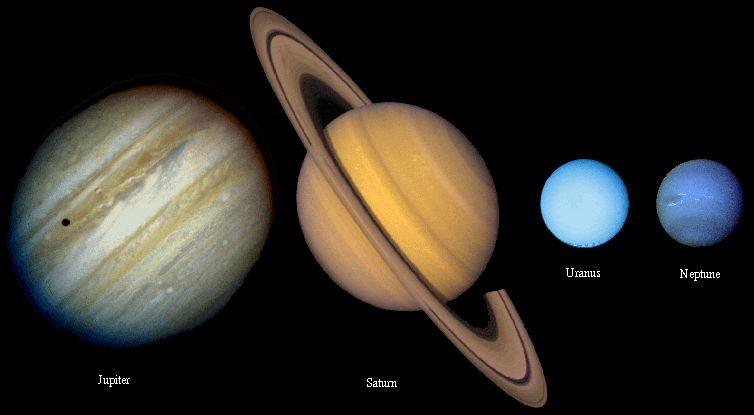
Astronomers think of the planets as falling into two broad categories—with one planet left over. The four planets (including the earth) closest to the sun are termed the terrestrial planets. The four farthest from the sun (not counting Pluto) are the jovian planets. And Pluto, usually the farthest out of all, is in an unnamed class by itself. Its location is jovian, while its size and composition put it more in a class with the moons of the jovian planets. Some astronomers prefer to think of it as the largest Kuiper Belt object rather than the smallest (and hardest-to-categorize) planet.
Snapshot of the Terrestrial Planets
Mercury, Venus, Mars, and Earth are called the terrestrial planets because they all possess certain Earth-like (terrestrial) properties. These include proximity to the sun (within 1.5 A.U), relatively closely spaced orbits, relatively small masses, relatively small radii, and high density (rocky and solid-surfaced). Compared to the larger, more distant jovian planets, the terrestrials rotate more slowly, possess weak magnetic fields, lack rings, and have few moons or none. In fact, within the terrestrial “club” the earth’s large moon is unique. The moon is only slightly smaller than the planet Mercury and larger than Jupiter’s moon Europa! As we have seen, the moon’s large size is one clue to its origin.
Snapshot of the Jovian Planets
The jovians are far from the sun and travel in widely spaced orbits. They are massive planets with large radii, yet they are of low density with predominantly gaseous makeup and no solid surface. In contrast to the terrestrial planets, they rotate faster, possess strong magnetic fields, have rings, and are orbited by many large moons.
The outermost jovian planet is Neptune.

No comments:
Post a Comment